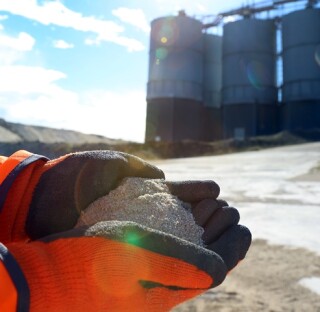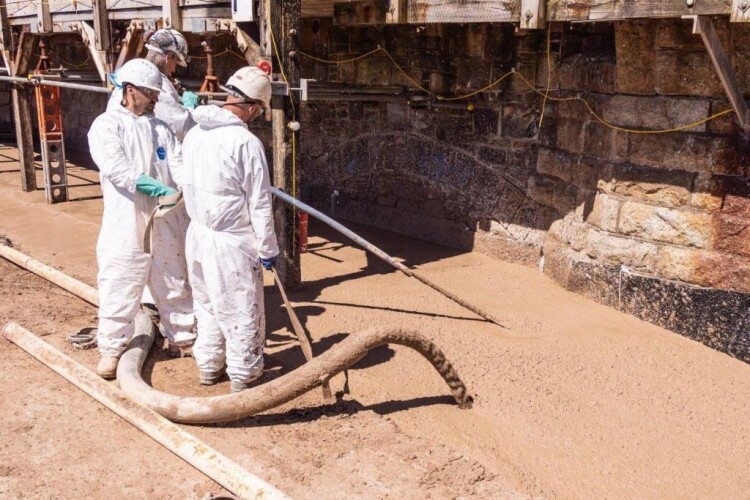A report out today* from the Institution of Structural Engineers and others says that ground granulated blast furnace slag (GGBS) is “a limited and constrained global resource”.
It’s okay to keep using it, the authors say, but there is not enough to go around so it is time to start looking for more sustainable alternatives.
Using GGBS to reduce greenhouse gas (GHG) emissions in concrete “needs to be carefully considered”, the report says.
A review of the use of GGBS in concrete was conducted by a panel of 13 people from across structural engineering, concrete and cement industries, construction and academia.
For many years GGBS has been specified as a partial replacement for Portland cement clinker in concrete due to its technical properties, such as improving concrete's durability. More recently, substituting clinker with GGBS has become the ‘go-to’ method for decreasing the carbon intensity of concrete in the UK, as the production of GGBS results in fewer greenhouse gas (GHG) emissions than the production of the clinker that it replaces.
But the paper puts the case that GGBS is a limited and constrained resource that is almost fully used up globally. Any increase in its use in one country is likely to result in a reduction elsewhere, balancing each other out overall.
The authors conclude that any local increase in the amount of clinker substituted with imported GGBS is unlikely to decrease global emissions – which means that GGBS should not be used in high proportions just in the hope of reducing emissions.
Will Arnold, head of climate action at the Institution of Structural Engineers (IStructE), led the project. He said: “Our purpose is to explain that GGBS is not a silver bullet for GHG emissions in concrete production as our paper demonstrates global constraints in GGBS availability. As a material, GGBS needs to be carefully considered to ensure it’s being used efficiently, and in the most appropriate manner.”

The authors stress that this does not mean that the use of GGBS should stop altogether since that would increase global emissions as more clinker would need to be produced globally to compensate. They recommend global supplies of GGBS should continue to be used up, particularly where it is required technically, and should come from well-established supply chains.
Co-author Iva Munro, ConcreteZero Lead at Climate Group, explained: “Alternative options beyond GGBS exist for reducing clinker usage and global GHG emissions – and engineers and designers should work with the supply chain to identify the best way to do this on each individual project.”

Noushin Khosravi, another co-author and sustainable construction manager at the Mineral Products Association (MPA), added: “Through collaboration with the value chain and a shared commitment to a sustainable future, the UK concrete industry can create a blueprint for sector decarbonisation in a manner that is globally scalable. By encouraging efficient utilisation of SCMs (supplementary cementitious materials) at a local level and accelerating adoption of new technologies, we can effectively reduce global GHG emissions.”
The paper recommends that designers, contractors and those along the supply chain ask three questions early in the design process to optimise GGBS use. These questions aim to secure a better understanding of the project opportunities regarding the need for, and availability of, GGBS:
- Do we need GGBS for technical reasons?
- Is there a well-established GGBS supply chain for our project?
- How else can we reduce concrete emissions?
The Low Carbon Concrete Group identified that using ground granulated blast furnace slag as a supplementary cementitious material (SCM) may result in a low carbon rating for a particular concrete but an overall increase in global greenhouse gas emissions in its Low Carbon Concrete Routemap, published last year.
In this report, the Low Carbon Concrete Group says: “We strongly support the recommendation for a further technical study to investigate whether there should be a limit on the use of GGBS in concrete for the sole purpose of reducing carbon intensity.”
* The efficient use of GGBS in reducing global emissions: An appraisal of the global availability of ground granulated blast furnace slag is available via www.istructe.org
Got a story? Email news@theconstructionindex.co.uk



